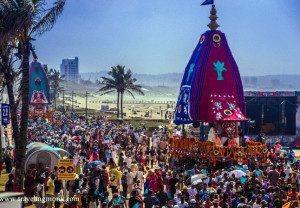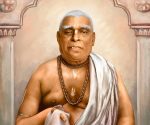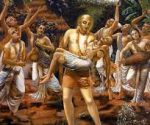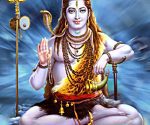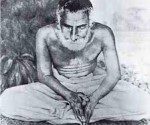Historic Ratha Yatra in Durban
Durban, Australia – April 10, 2013 (VNN) by JANANIVASA
The Durban Ratha Yatra festival has evolved into one of the biggest, if not the biggest, of its kind outside of India. In its momentous 25th year of existence, the freshly incarnated festival was hosted under the motto Culturally many – Spiritually one and was pioneered by Indradyumna Swami. The Festival of Chariots, as it is commonly known in SA, came full circle this year as it returned to the location where it was first celebrated i.e. the amphitheater on the Bay of Plenty along the Durban beachfront. It was a glorious exhibition of the generosity of Iskcon that broke down cultural barriers and attracted thousands of locals to get the mercy of Jagannatha and the holy name.
The festival spanned over Easter weekend (29 March – 1 April) and for the eighteenth consecutive year, Kadamba Kanana Swami participated. It started-off with the Ratha Yatra itself. As it happens every year, Maharaja took the lead of one of three kirtans that accompanied each of three massive chariots mounted by Their Lordships Jagannatha, Baladeva and Subhadra. Singing for two hours under the blazing African sun, in front of Jagannatha’s cart, Maharaja got the crowd going wild. The other kirtans in the transcendental procession were led by Bada Hari Prabhu, BB Govinda Swami and Bhakti Charu Swami.
The festival still preserved many traditional aspects that it became well-known for over the years, however this time round, it was presented with a cosmopolitan slant in order to make it appealing to the general public. The regular book stall was marketed as Books beyond borders while the customaryquestions and answers tent was made-over into Ask, Discover, Explore andCulturally Many seminar tents. Jayadvaita Swami strongly featured here by facilitating inter-faith dialogues.
Another highlight at the festival was the Kirtanuity tent and as the name suggests, provided continuous kirtan through the duration of the festival. Madhava Prabhu, Bada Hari Prabhu, Vraja Krsna Prabhu, BB Govinda Swami and Kadamba Kanana Swami were some of the main attractions at this tent.
A special event that took place on the beach on Sunday afternoon was Rainbow Splash, a contemporary take on the traditional Holi Festival. Well-known local DJs provided entertainment while hundreds of visitors splashed coloured powders on each other.
A huge tent was designated for all day long cultural entertainment that left festival-goers spoilt for choice and each day, it culminated with a special event. Friday ended with a dazzling drama that was directed by Bhakti Marga Swami. On Saturday, the crowd was entertained by a celebrity cook-off facilitated by SA Masterchef Deena Naidoo. And in the late evening, many prominent personalities from the local government, including the mayor of Durban and the premier of the province, were received in a special ceremony. Sunday night featured the Kwazulu-Natal Philharmonic Orchestra accompanied by the Kwa-Mashu choir, BB Govinda Swami, Bada Hari Prabhu and Jayadev Prabhu; which kept a full-house riveted during their two hour slot. On Monday night, Freshlyground – a local band that gained international recognition during the 2010 soccer world cup opening ceremony in SA, drew a massive crowd that stayed-on for the final kirtan of the festival with Madhava Prabhu and Indradyumna Swami.
Kadamba Kadamba Swami contributed to the festival in many ways. His enthusiasm during his daily musical performances at the Kirtanuity tent was tremendous as he inspired devotees and visitors to join in the dancing. Even the mayor of Durban swayed with the crowd!
On Saturday, at the Ask, Discover, Explore tent Maharaja elaborated on the question, Does the soul exist? In keeping with the harmonius mood of the festival, Maharaja began as follows, “Thank you very much for our festival. Of course when I say ‘our’ I mean to say that it is your festival as much as mine; it is a festival for all of us. It is a festival based on spirituality.” Dismissing the big scientific discussion of arguing back and forth about the existence of the soul, Maharaja went on to explain the importance of including the concept of the soul in our view of the world. He elaborated further on how the soul exists and where it actually comes from.
 Later that day, as the host of an inter-religious dialogue in the Culturally Manyseminar tent, Maharaja pointed out that all religions aim at the same one God and that the purpose of religion is to place God in the centre, “If we are utilizing our religious traditions simply for having a peaceful way of life, that is nice… everything very moral, everything very ethically correct, everything socially considered… very nice but not nice enough! Because the real purpose of religiosity is to place God in the centre, completely in the centre of one’s life.” He explained that the Lord is not limited to having only one form nor is he limited to having no form, but that he is present in his unmanifested aspect as well as in unlimited forms. Later, he concluded that the Lord is to be connected through four principles, given in the catur sloki (4 verses) of the Bhagavad-gita (10.8-10.11), “First vision, then to hear and discuss the glories of the Lord, to chant the names of the Lord and then by serving him, he will reveal himself within our consciousness.”
Later that day, as the host of an inter-religious dialogue in the Culturally Manyseminar tent, Maharaja pointed out that all religions aim at the same one God and that the purpose of religion is to place God in the centre, “If we are utilizing our religious traditions simply for having a peaceful way of life, that is nice… everything very moral, everything very ethically correct, everything socially considered… very nice but not nice enough! Because the real purpose of religiosity is to place God in the centre, completely in the centre of one’s life.” He explained that the Lord is not limited to having only one form nor is he limited to having no form, but that he is present in his unmanifested aspect as well as in unlimited forms. Later, he concluded that the Lord is to be connected through four principles, given in the catur sloki (4 verses) of the Bhagavad-gita (10.8-10.11), “First vision, then to hear and discuss the glories of the Lord, to chant the names of the Lord and then by serving him, he will reveal himself within our consciousness.”
The next day, Maharaja spoke once again in the seminar tent, this time in an interfaith dialogue with Sheik Rafeek Hassen, the founder and director of an organization called the iiFRi, the Islamic Interfaith Research Institute, an institute dedicated to building bridges between the faiths. The topic was Glorifying God. Firstly, the two speakers introduced their own beliefs and their concepts of glorification of the Lord, pointing out that there is both prayer and chanting of the names of God as a means to connect to him. Maharaja went on to explain the Vedic understanding of chanting, “When we speak of chanting the name of the Lord, the principle point to be established is that there is no difference between chanting the name of the Lord and the Lord himself. The Lord, being of a spiritual nature, his name is equally potent as his very self abhinnatvan nama-naminoh. As it is said, there is no difference between the name of the lord and his person. Therefore when one chants the name of the Lord, one is actually experiencing the presence of the Lord – immediately!” Speaking in a spirit of team work, in analyzing the common ground of their respective faiths, both speakers then answered various questions from the podium, especially filtering out the essence of religion as Love of Godhead more than a mere ritualistic following.
 On Sunday morning, aninitiation ceremonytook place in the Sri Sri Radha-Radhanathatemple. Initiations were given by Bhakti Caitanya Swami, Bhakti Marga Swami and Kadamba Kanana Swami. Kadamba Kanana Swami started the ceremony as the first speaker and gave an analogy of a hundred story building, with an unlimited staircase leading up to its top which he compared to various gradual yoga processes. He elaborated further that sincere following of bhakti yoga, under the guidance of a spiritual master, serves as an elevator by quickly uplifting one to the highest platform. In their latter talks, Bhakti Marga Swami and Bhakti Caitanya Swami developed on this example by colouring it with more similarities. Kadamba Kanana Swami initiated two devotees from Pretoria, giving them the names Kulasekhar Das and Nanda Gopa Das.
On Sunday morning, aninitiation ceremonytook place in the Sri Sri Radha-Radhanathatemple. Initiations were given by Bhakti Caitanya Swami, Bhakti Marga Swami and Kadamba Kanana Swami. Kadamba Kanana Swami started the ceremony as the first speaker and gave an analogy of a hundred story building, with an unlimited staircase leading up to its top which he compared to various gradual yoga processes. He elaborated further that sincere following of bhakti yoga, under the guidance of a spiritual master, serves as an elevator by quickly uplifting one to the highest platform. In their latter talks, Bhakti Marga Swami and Bhakti Caitanya Swami developed on this example by colouring it with more similarities. Kadamba Kanana Swami initiated two devotees from Pretoria, giving them the names Kulasekhar Das and Nanda Gopa Das.
And thus ended a fabulous Ratha Yatra festival. The devotees in Durban have worked hard each year in an effort to continuously improve the festival, however it will be a challenge undoubtedly to top what they pulled-off in this milestone year! Maharaja is still in Durban, in recuperation. His travels continue this weekend as he makes his way to Johannesburg for the last leg of this visit to SA.




